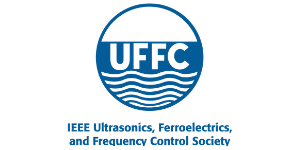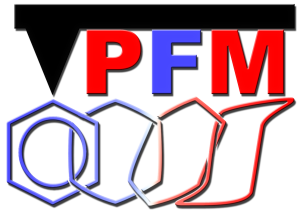Why does relaxor-PT ferroelectric crystal have giant piezoelectricity? - The role of anisotropy and its applications
Perovskite ferroelectric materials are at the heart of electromechanical devices, such as medical imaging transducers, industrial nondestructive evaluation, and piezoelectric sensors, to name a few. Relaxor-PbTiO3 (relaxor-PT) ferroelectrics show superior dielectric/piezoelectric properties, far outperforming conventional ferroelectric Pb(ZrxTi1−x)O3 (PZT) ceramics. Why do relaxor-PT single crystals possess giant piezoelectricity? In the last 3 decades, different mechanisms have been proposed in attempts to comprehend its origin, thus benefiting the design of the next generation of ferroelectric materials. Analogous to PZT solid solution ferroelectrics, the morphotropic phase boundary (MPB) separating different ferroelectric phases possesses a flat free energy profile due to the similar free energies of the coexistent phases, which induces structural instability and promotes rotation of the polarization. Meanwhile, the good properties of relaxor-PT based materials are inherently associated with their unique local structural heterogeneity, i.e., the existence of nanoscale heterogeneous regions that coexist with normal ferroelectric domains, where the local energy competition will lead to a greatly flattened local energy profile, which is conducive to the polarization rotation. Both of the above can be categorized as forms of structural instability. In addition to the structural instability, unlike polycrystalline materials, the single crystals possess a strong anisotropic property, where the anisotropic free energy profile determines the easy paths for polarization change and corresponds to the enhanced properties. Depending on the phase and poling direction, the relaxor-PT ferroelectric crystals possess different engineered domain configurations, where the highest piezoelectric coefficient is not along the direction of spontaneous polarization but is contributed by the polarization rotation. All of these factors synergistically contribute to macroscopic dielectric and piezoelectric properties.
In this regard, the focus of this presentation is how to understand and take full advantage of the strong anisotropic feature of relaxor-PT ferroelectric crystals as well as exploring their multifunctional coupling phenomena for different applications. As expected, their properties, including piezoelectric and mechanical loss, are orientation dependent, so are based on the engineered domain configuration. Amazingly, the [011] poled rhombohedral relaxor-PT crystals possess many very unique features. Where a large in-plane strain under electric field exists, it opens up a new freedom to tailor numerous functionalities, while their distinct face-shear vibration mode gives these crystals potential for low frequency acoustic transducers and tactile sensors. Of particular interest is that the existing 71o domains in [011] poled rhombohedral crystal give identical projection of the indicatrix on the (011) and (100) planes, leading to a high transparency of the crystal, while the polarization rotation contributes to a superior electro-optic (EO) coefficient, offering great promise for miniaturization, portability, and ultralow driving voltage of EO devices. All these merits give us a good paradigm of how we can explore the new limits of relaxor-PT ferroelectric crystals in emerging applications, multifunctional coupling, and integration, with the hope that this will guide the design, fabrication, microstructure, properties, and applications of these ferroelectric crystals.
Microstructure: Fingerprint of Processing, Clue to Unraveling the Functional Properties of Ferroelectric Ceramics
Materials’ requirements in the world of electronic devices are rapidly expanding towards their multi-functionality, their integration onto reactive substrates, the use of environmentally friendly raw materials and processes, reduced levels of energy consumption and their high efficiency. This is reflected in the search for ceramic materials with excellent, reproducible and stable functional properties obtained via energy-efficient processing.
While chemical composition of perovskite ferroelectrics determines their symmetry and phase transitional behavior, and consequently their physical properties, tuning of properties may be achieved by doping strategies. As revealed decades ago, microstructural design is another critical factor which contributes to tailoring the functional properties of ferroelectrics.
The choice of the processing route and related shape – bulk ceramic, multilayer, thick or thin film – contributes to the stoichiometry and defect chemistry, and importantly tailors the microstructural features down to nm-scale. While thermal energy has been for ages the main driving force for consolidation of ceramics, emerging low-temperature routes such as cold sintering and aerosol deposition offer a new perspective on the evolution of the microstructure and defect chemistry in non-equilibrium conditions.
The focus of this contribution is on reexamination of classical processing-microstructure-properties relationships for selected ferroelectric and relaxor-ferroelectric ceramic materials. Case studies of sodium potassium niobate-based piezo-/ferroelectrics, and lead-based relaxor-ferroelectrics for electrocaloric applications will be discussed.
Ultrathin Ferroelectricity and Its Application in Future Logic and Memory Devices
Compared to archetypical perovskites, fluorite HfO2 based ferroelectric materials are process-compatible with advanced CMOS transistors. As a result, they promise to bring ferroelectric technologies into wide-spread applications. At the same time, ferroelectricity in these materials is also different. In conventional perovskites, the polarization becomes weaker as the thickness is decreased due to ‘size effects’. Balking this conventional trend, our recent work has shown that ferroelectricity in HfO2 in fact enhances as the thickness goes down. The ferroelectricity can be demonstrated even in a 1 nm film, which is just two-unit cells! In this presentation I shall discuss these results. In addition, I shall also discuss Negative Capacitance transistors with just 18A thick ferroelectric material- the same thickness of high- dielectric used in today’s advanced transistors. I shall further present ferroelectric tunnel junction results with 1 nm ferroelectric. These results demonstrate that, unlike conventional ferroelectrics, thickness scaling is not a bottleneck for HfO2 based ferroelectrics, paving the way for their integration in the most advanced logic and memory devices.
Towards the integration of ferroelectric oxide films in flexible electronics by low-temperature solution methods
The 1990’s trend toward the miniaturization of functional devices driven by the microelectronic industry led to the development of thin film materials integrated with semiconductor substrates (Si-technology), able to use their properties in micro and nanodevices with high integration densities and low operation voltages. However, since the beginning of this century, the electronic industry is demanding cost-efficient, soft-portable and high-tech devices. This has pushed the advance of Flexible Electronics, where the thin film is deposited on cheap flexible substrates (e.g., polymers, paper or textile). These substrates would also meet technological demands difficult to tackle by semiconductor substrates, such as their compatibility with roll-to-roll processing and printing technologies, thus making real applications not possible before.
The degradation temperature of flexible substrates is always below 400°C. Therefore, Flexible Electronics is calling for low-temperature thin-film fabrication methods, in addition to materials that can be processed at these temperatures. Hence, organic and amorphous metal oxide semiconductors are the most widely used materials in Flexible Electronics. However, other active layers different from semiconductors are demanded because of the need of enlarging the performance of the forthcoming flexible devices. This is an opportunity for ferroelectric oxide thin films since their intrinsic multifunctionality (e.g., ferroelectric, pyroelectric, piezoelectric, multiferroic or photoferroic) would make possible multiple operations in the flexible device. But, in general, ferroelectric oxide films have to be crystalized at temperatures that exceed by far the thermal stability of the most favorable flexible substrate (i.e., Kapton polyimide). Transference methods can be used to avoid this problem. Here, the film is first processed at high temperatures on a rigid substrate, and then transferred to the flexible substrate. However, these techniques involve complex manufacturing methods and costly equipment.
It should be also taken into account that the manufacturing of flexible electronic devices not only calls for low-temperature fabrication processes but also for deposition techniques that scale easily to the large areas required in flexible devices. In this regard, solution deposition methods are the best positioned today to integrate metal oxide thin films with flexible substrates, as a large-area, low-cost, high throughput fabrication technique.
This conference presents a snapshot of the challenges for the integration of ferroelectric oxide films with flexible electronics, making emphasis in the development of novel solution synthesis strategies able to achieve the reduction of the processing temperature of the ferroelectric oxide and to permit the direct integration of large-area coatings of these active films with plastic substrates.
Not quite ferroelectric
Over the century that has elapsed since the discovery of ferroelectricity, we have built a considerable body of knowledge around electric polarization and its interaction with external stimuli such as voltage, mechanical stress or light. This entire conference is proof of that. However, along the way we have also learnt that, in the right conditions, polar responses may be elicited from non-polar materials. I would like to dedicate my talk to these not-quite-ferroelectric phenomena.
I will start, predictably enough, with flexoelectricity, a phenomenon pervasive in all materials and relevant to any physical response to inhomogeneous fields and/or deformations – a situation that includes, but is not limited to, piezoresponse force microscopy. I will then move on to a different form of not-quite-ferroelectricity, namely antiferroelectricity, and its connection with flexoelectricity, photoelectricity, switching dynamics and the origin of its anomalous electrocaloric effect. Lastly, and depending on time availability, I will outline on-going research on nanomechanics and the ferroelasticity of oxide membranes.
Ferroelectricity in Biological Hierarchy
Switchable spontaneous polarisation is one of the primary criterion of a material to be called ferroelectric. We will provide a critical overview of the developments in the study of ferroelectricity in biological systems and discuss various strengths and pitfalls. We will then try to bridge the current study in ferroelectricity in biological hierarchy with microscopic electrophysiological observations in Piezo 1 and Piezo 2 proteins responsible for mechanical and thermal sensing in biological systems.
Since the discovery of piezoelectricity in wood and bone in 1950s, switchable polarisation has been reported in many biological materials both in natural and synthetic forms including organic, inorganic as well as their composite forms. Biological materials cannot avoid water, which is generally considered as deleterious in conventional ferroelectrics. Water can contribute to a leaky capacitive behaviour of biological materials. This leaky nature may be complicated by the observation that the polarisation may not be fully reversible as it would be expected in conventional non-biological ferroelectric materials. Biological building blocks possess chirality, low symmetry, spontaneous charge separation and dipole orientation. They can be found in naturally occurring electret states in their native molecular organisation, hierarchical organisation (e.g. in organelles, cells, tissues and organs) as well as in their mineralised forms. As electrets, such materials exhibit piezoelectricity, pyroelectricity, thermal depolarisation and relaxation, streaming potentials and even switchable polarisation e.g. ferroelectricity. They can also be polarised, depolarised and hyperpolarised using electrophysiological stimulation. We will show that we are probably dealing with similar origin of ferroelectricity in biological hierarchy and electrophysiological response, which, currently are considered as two separate phenomena.
















